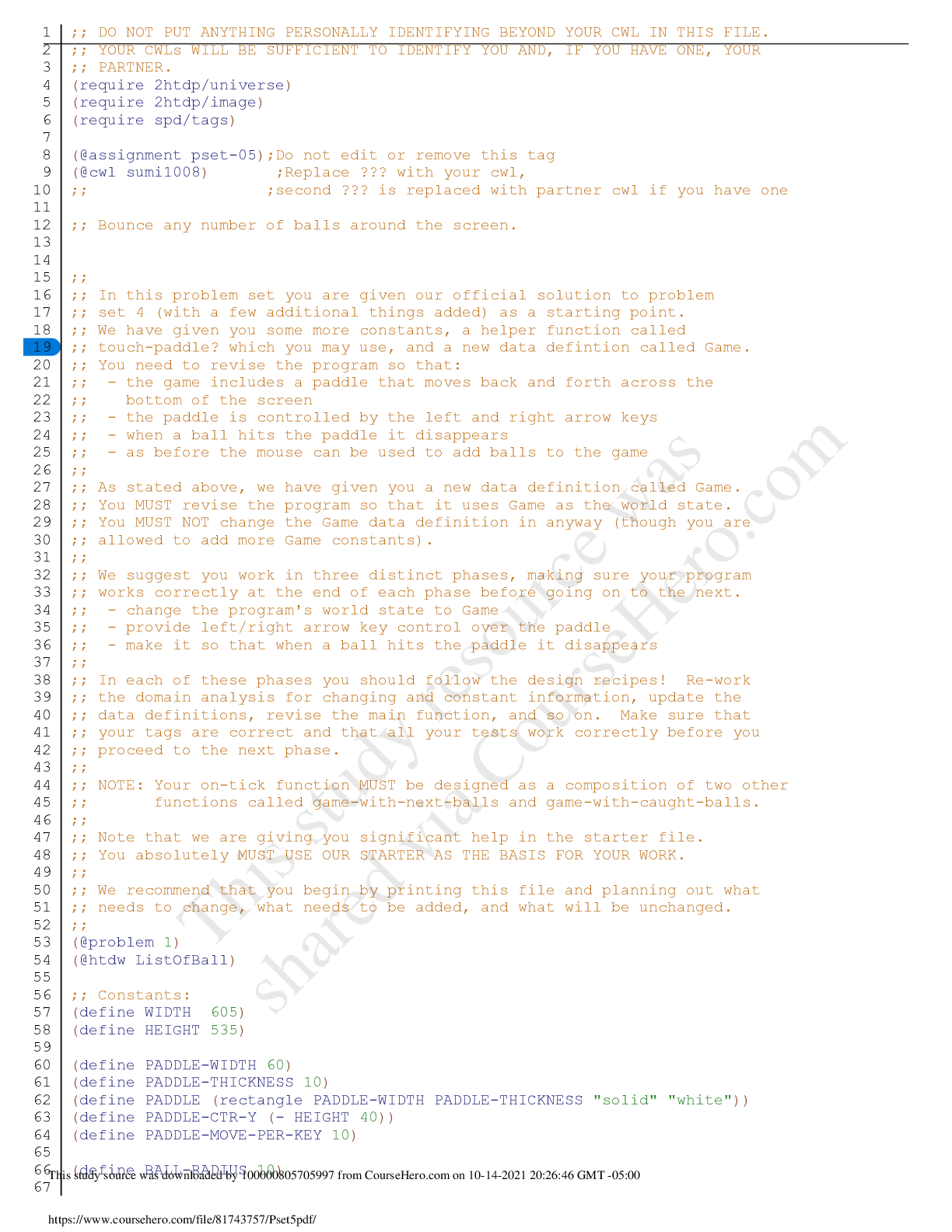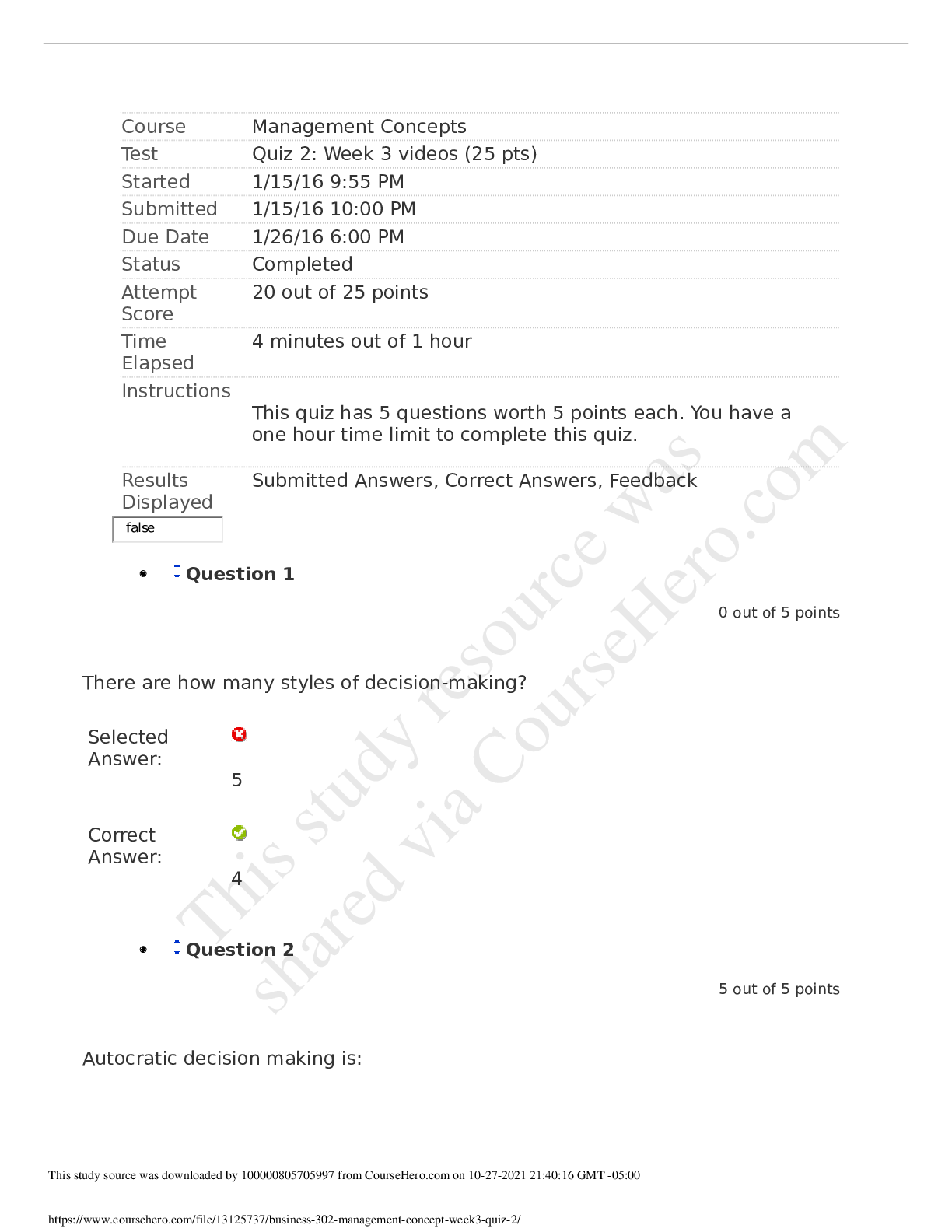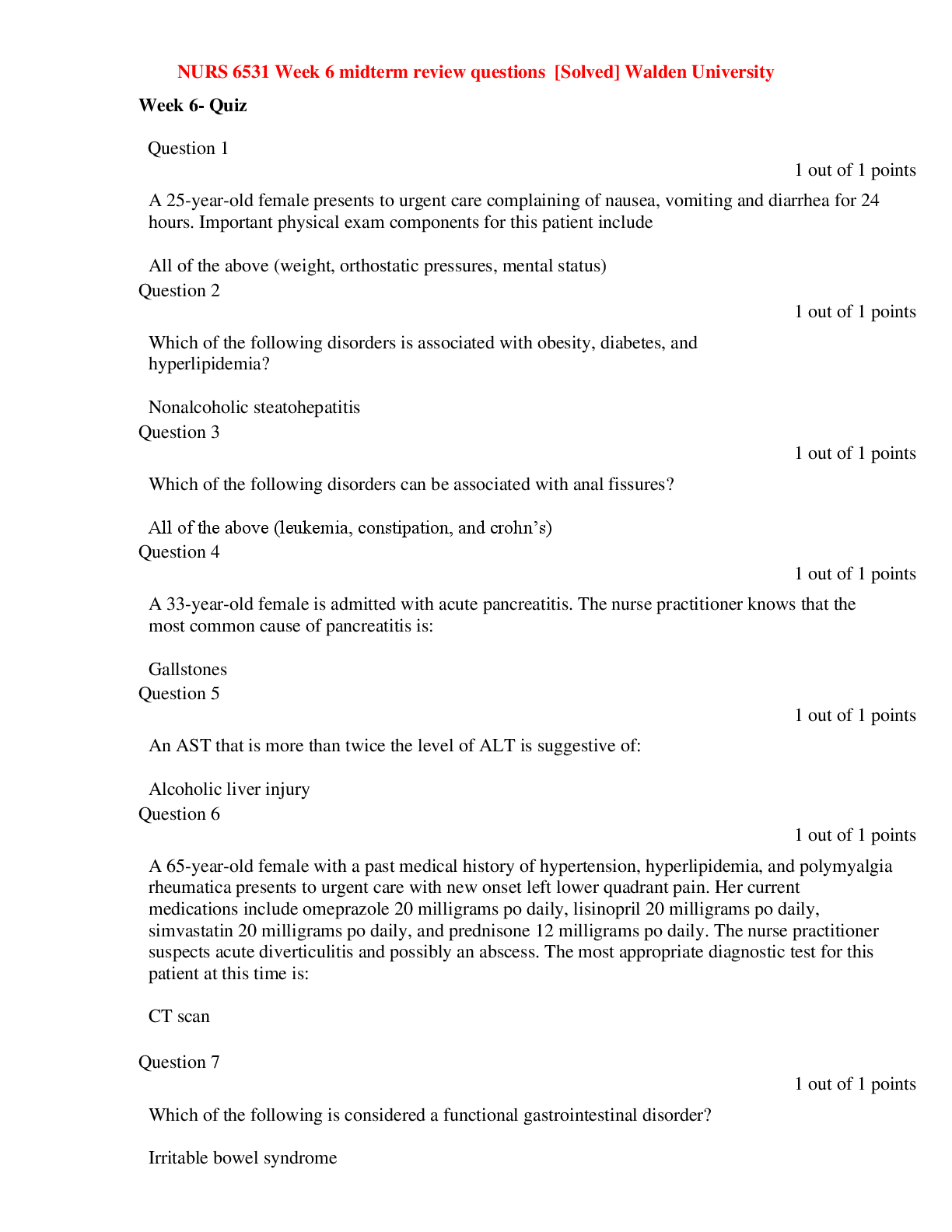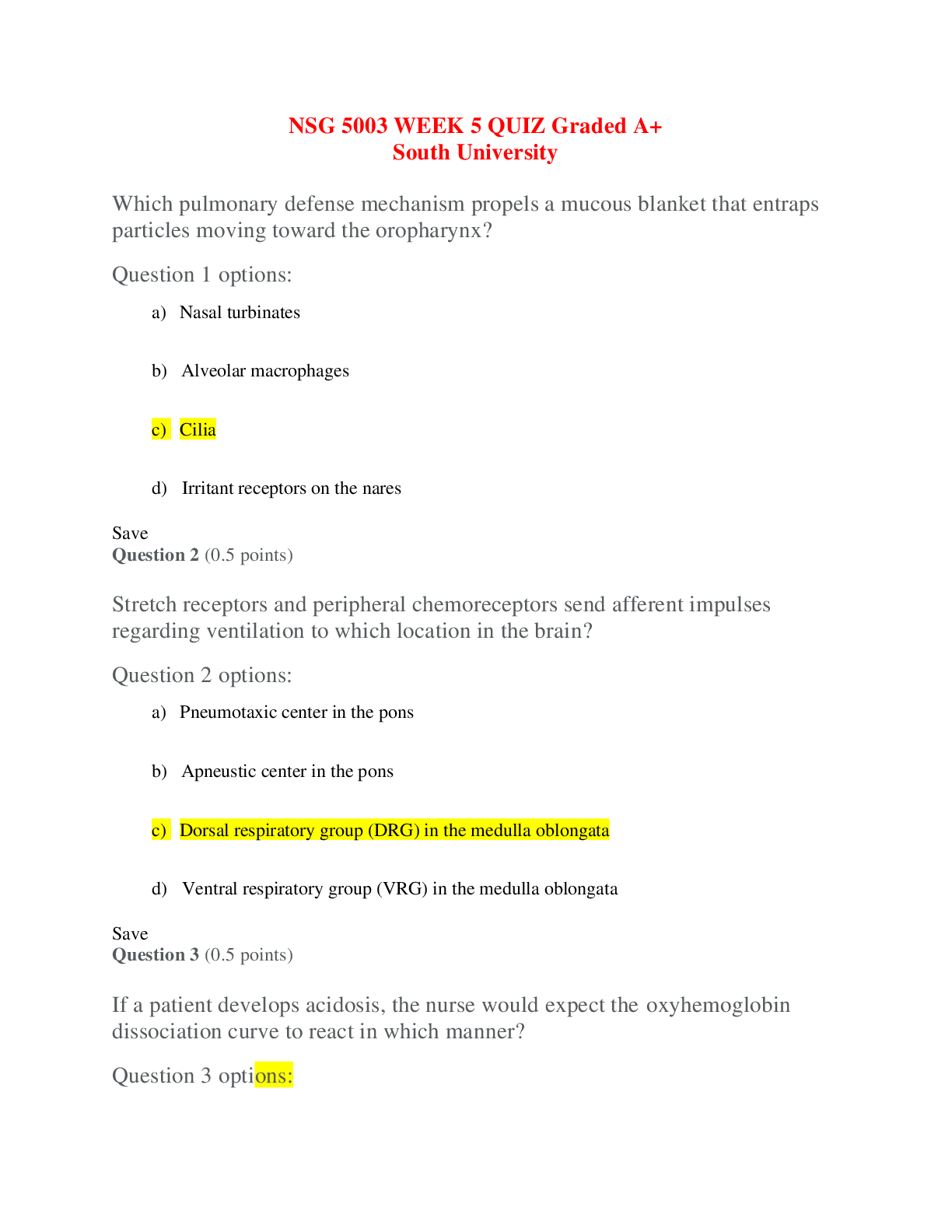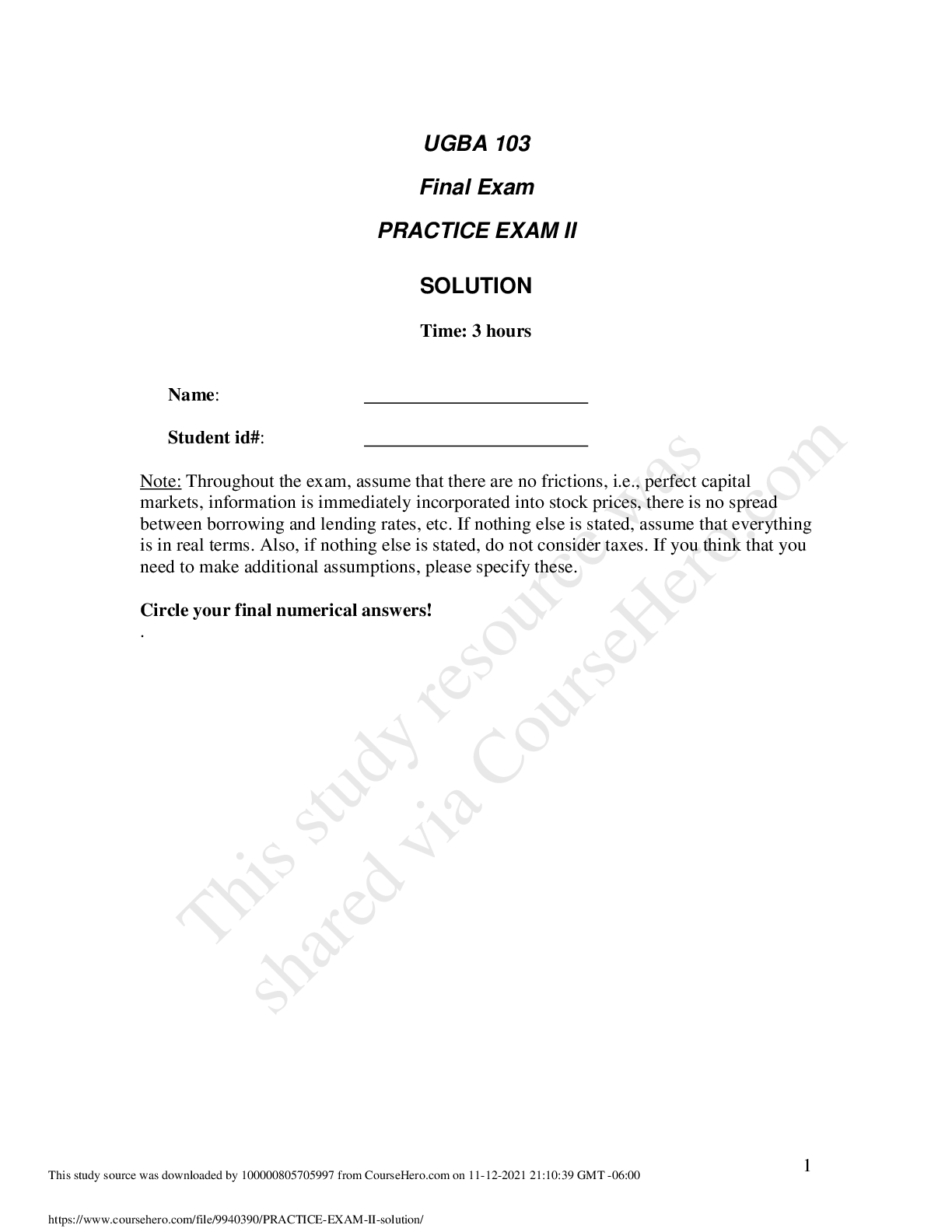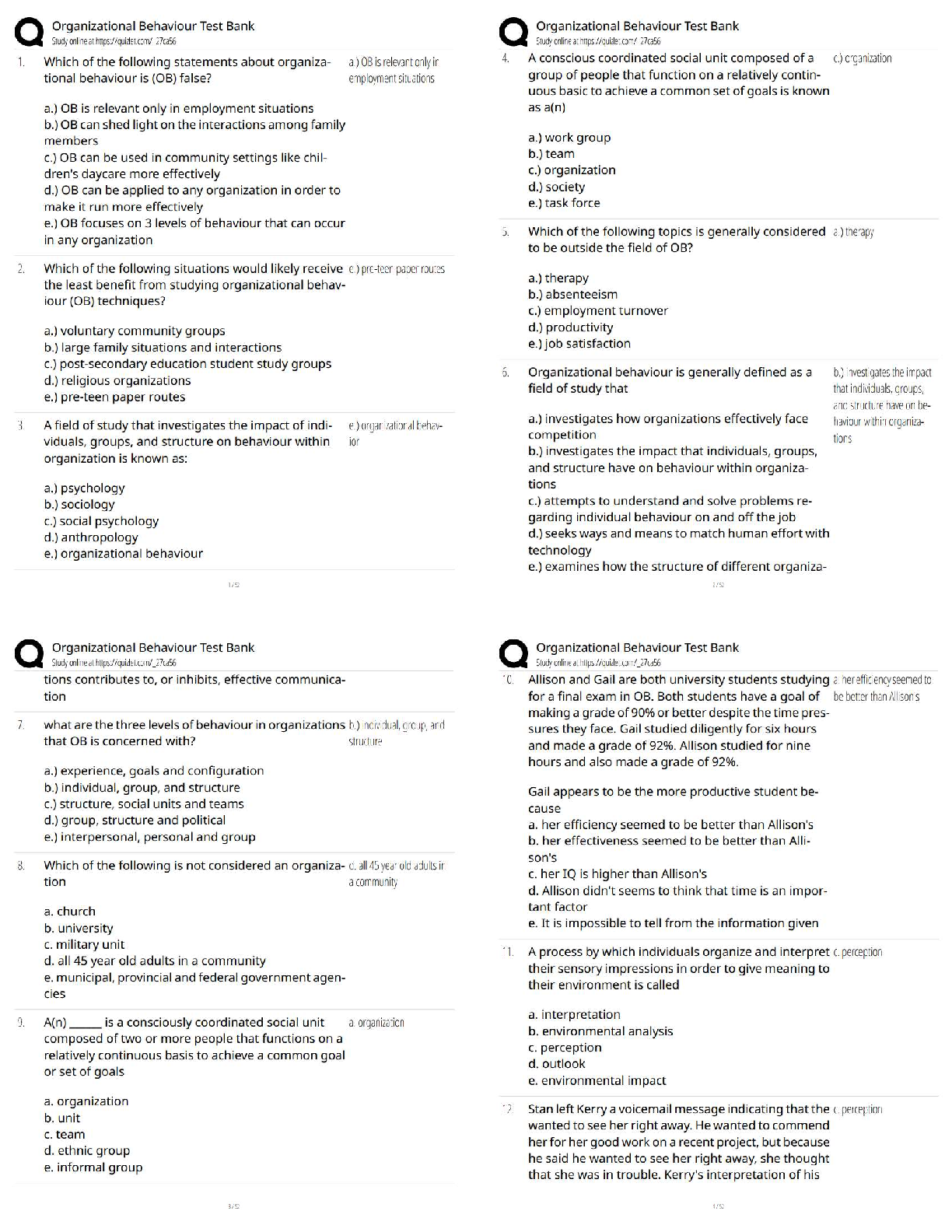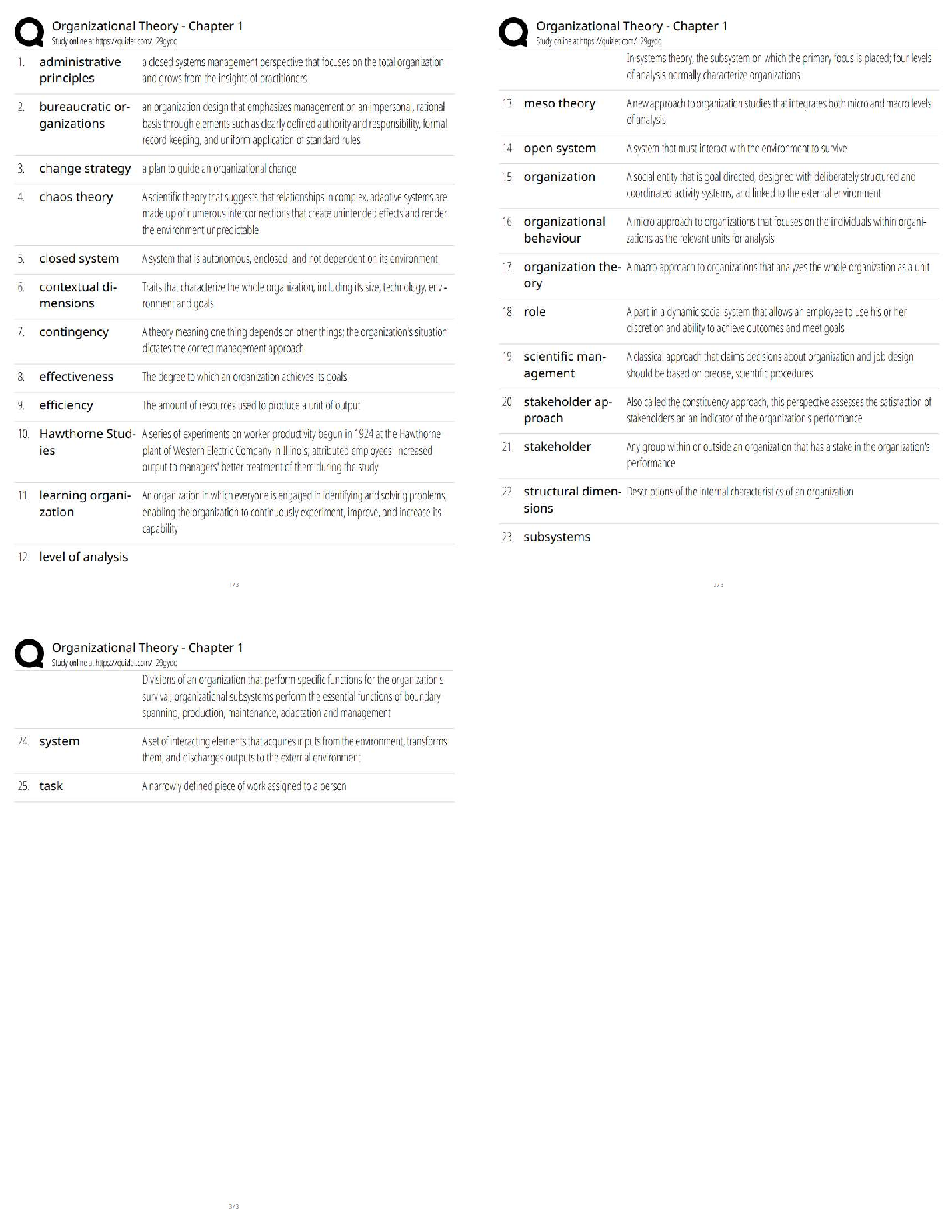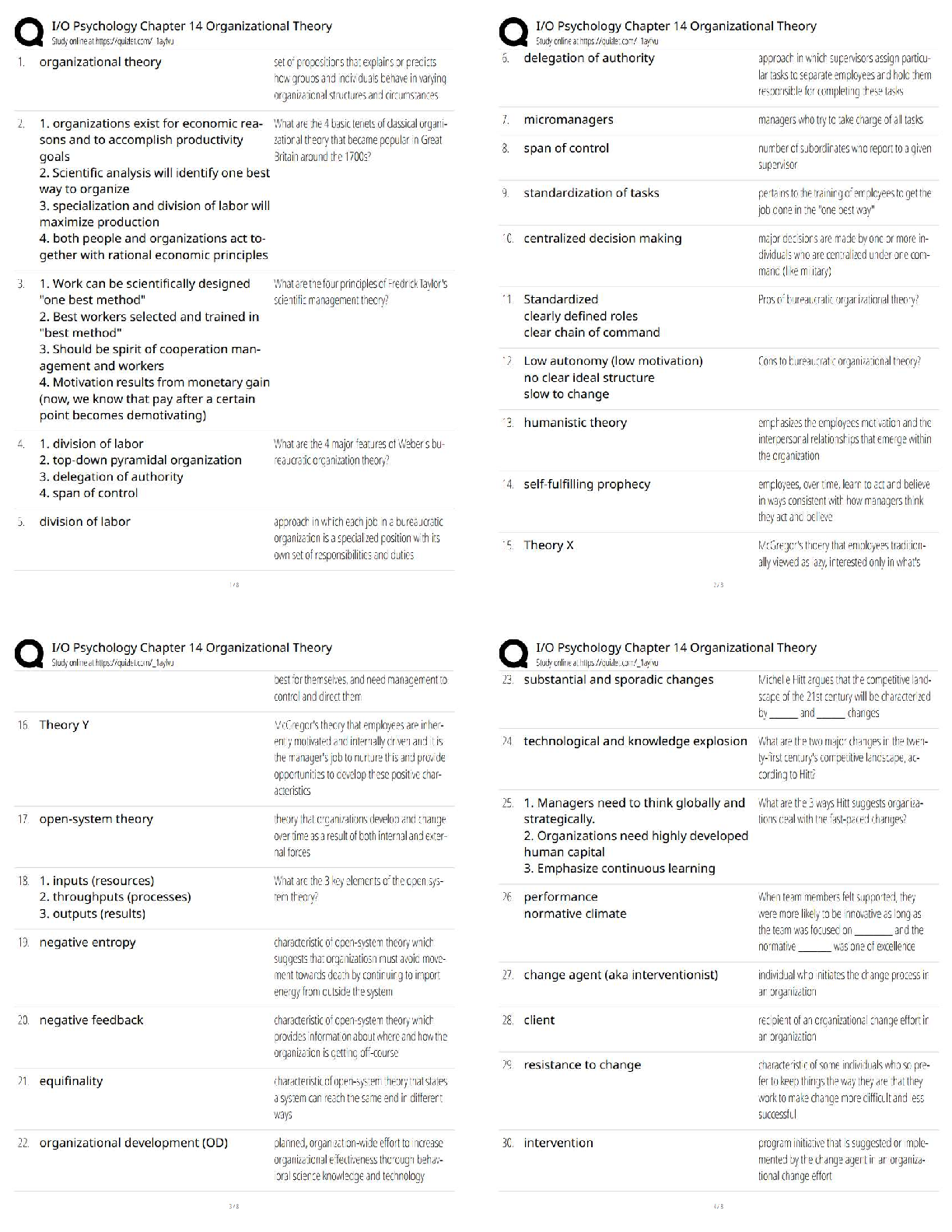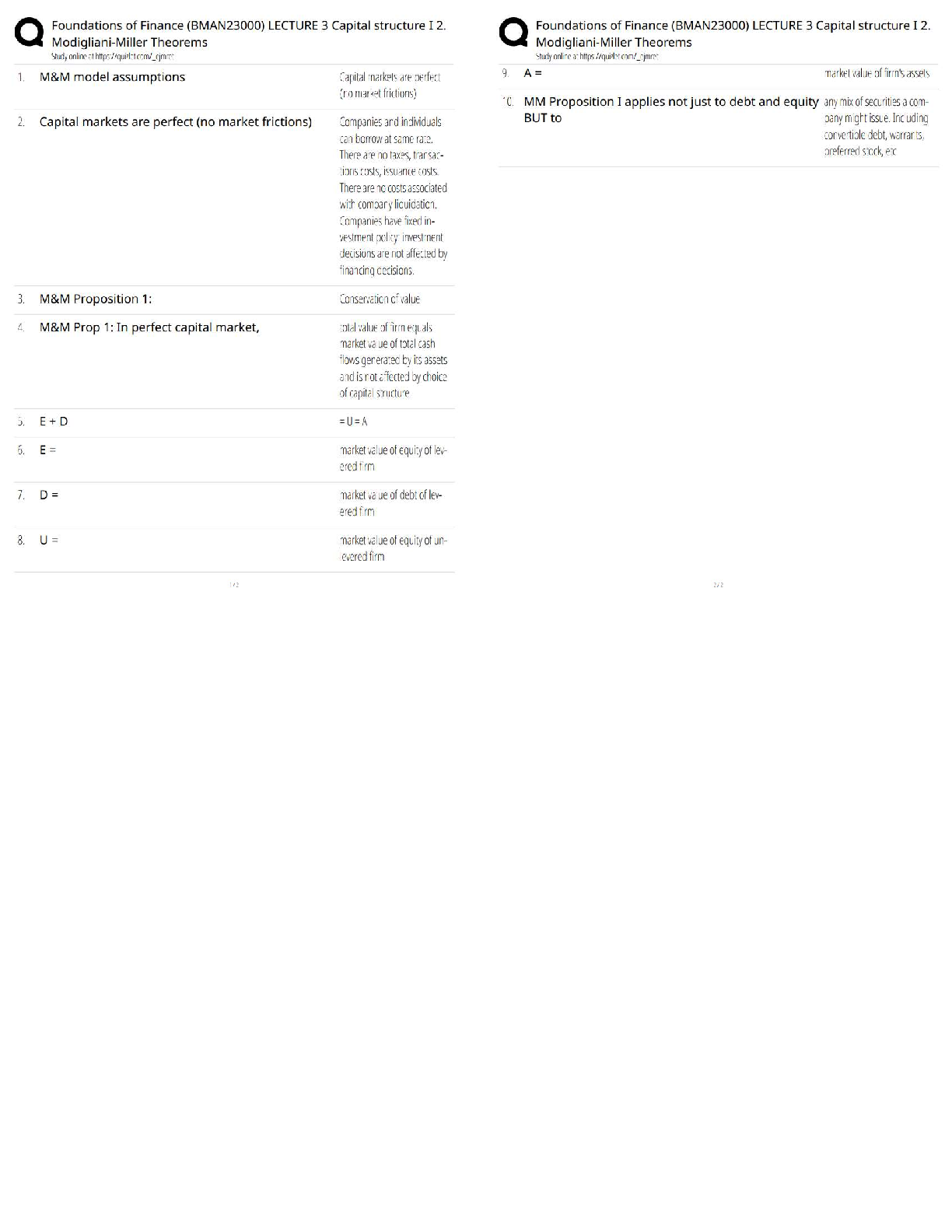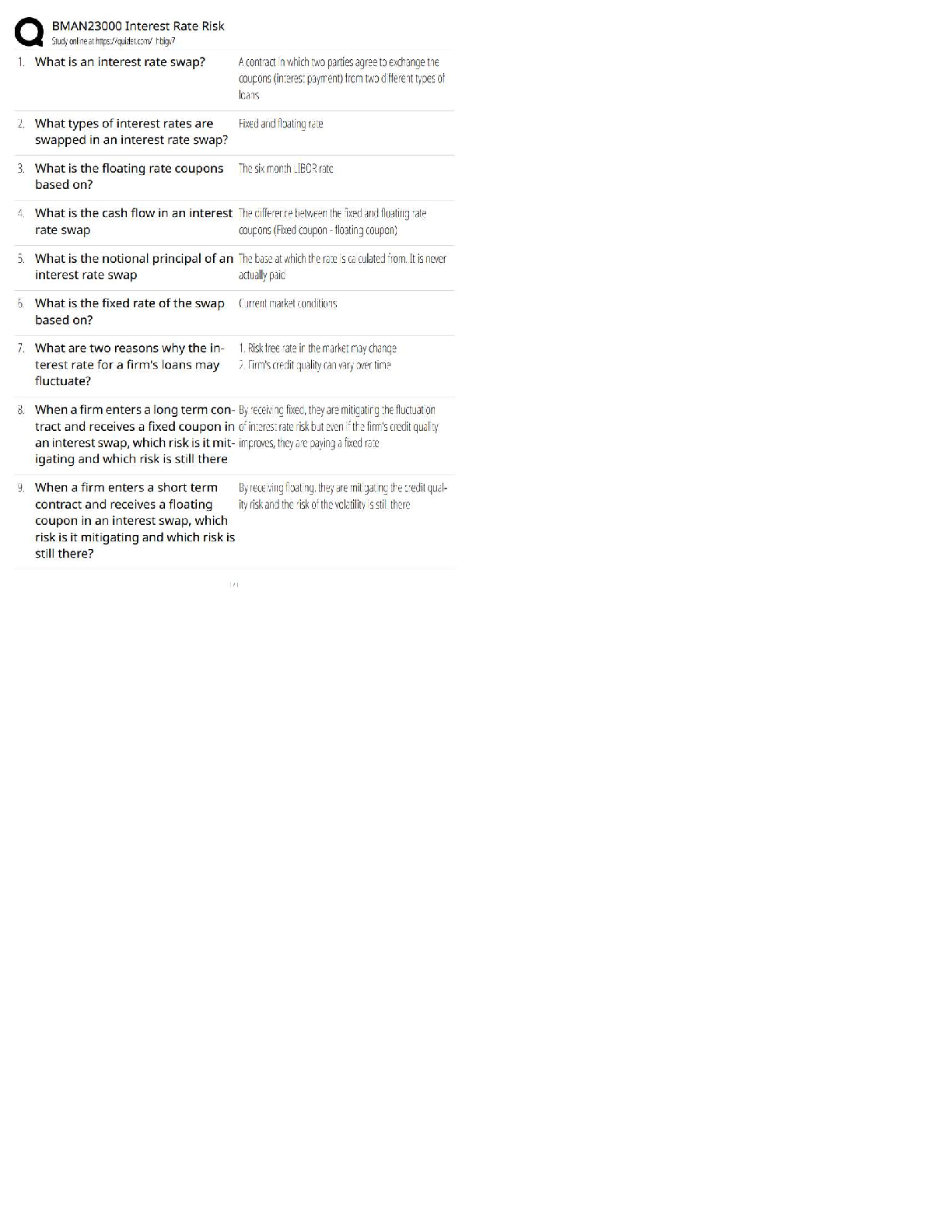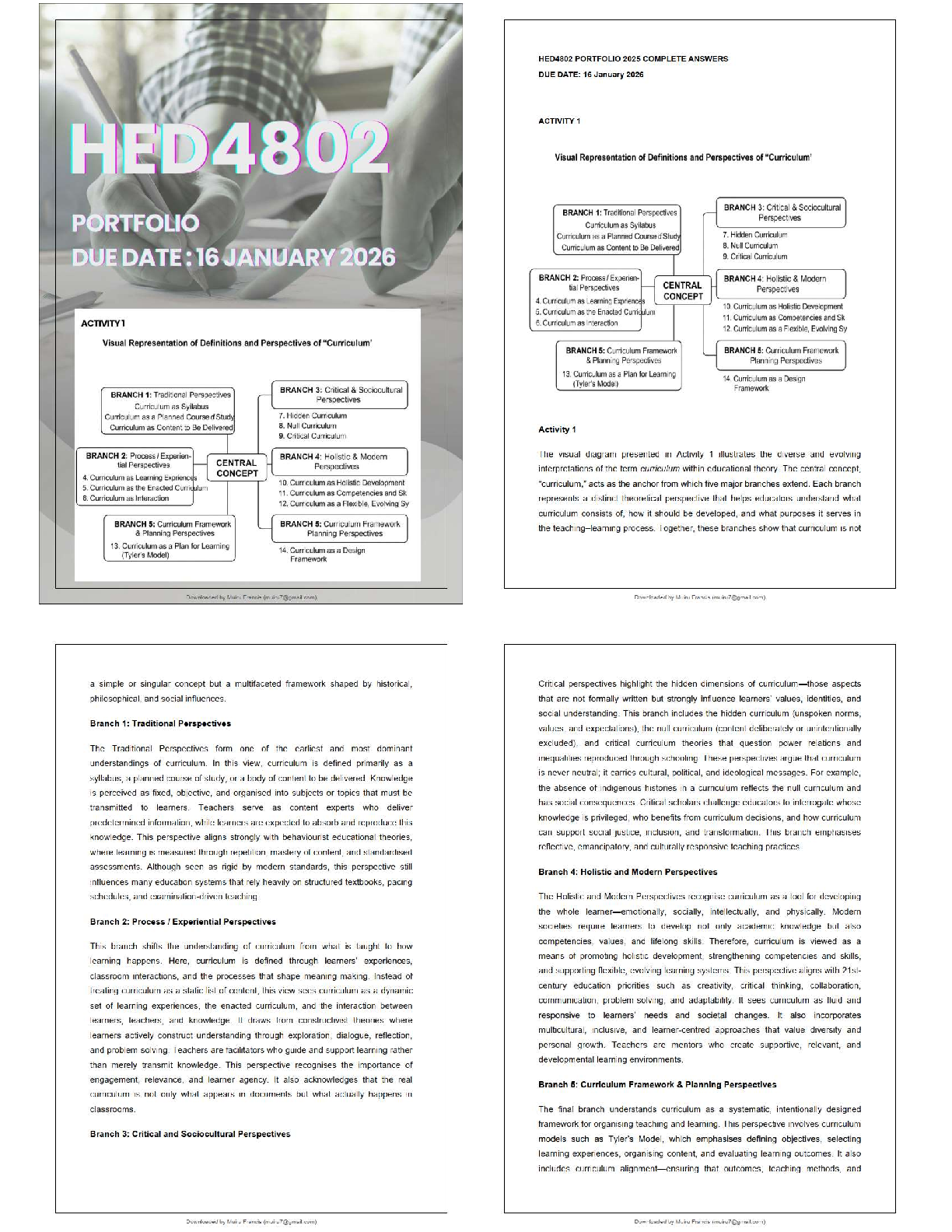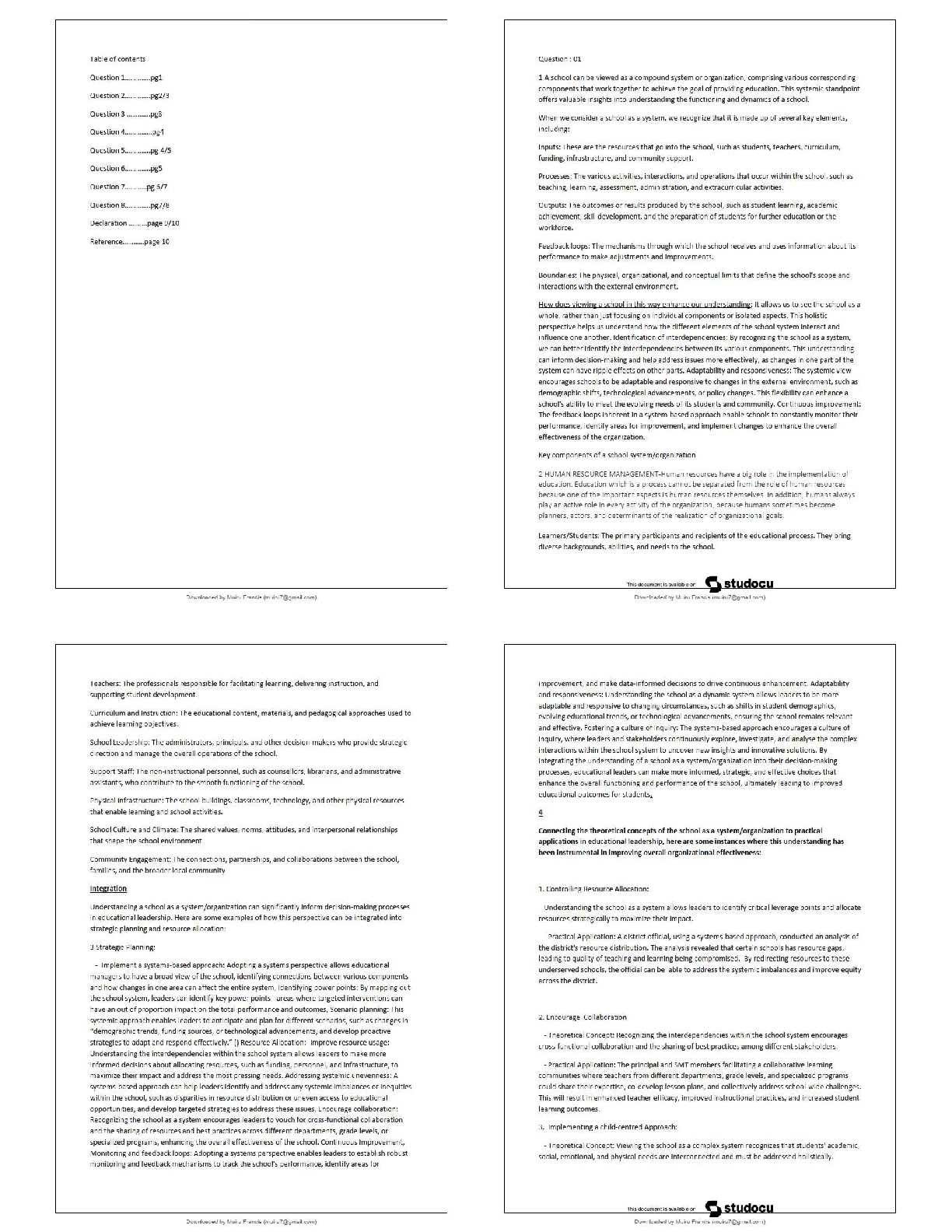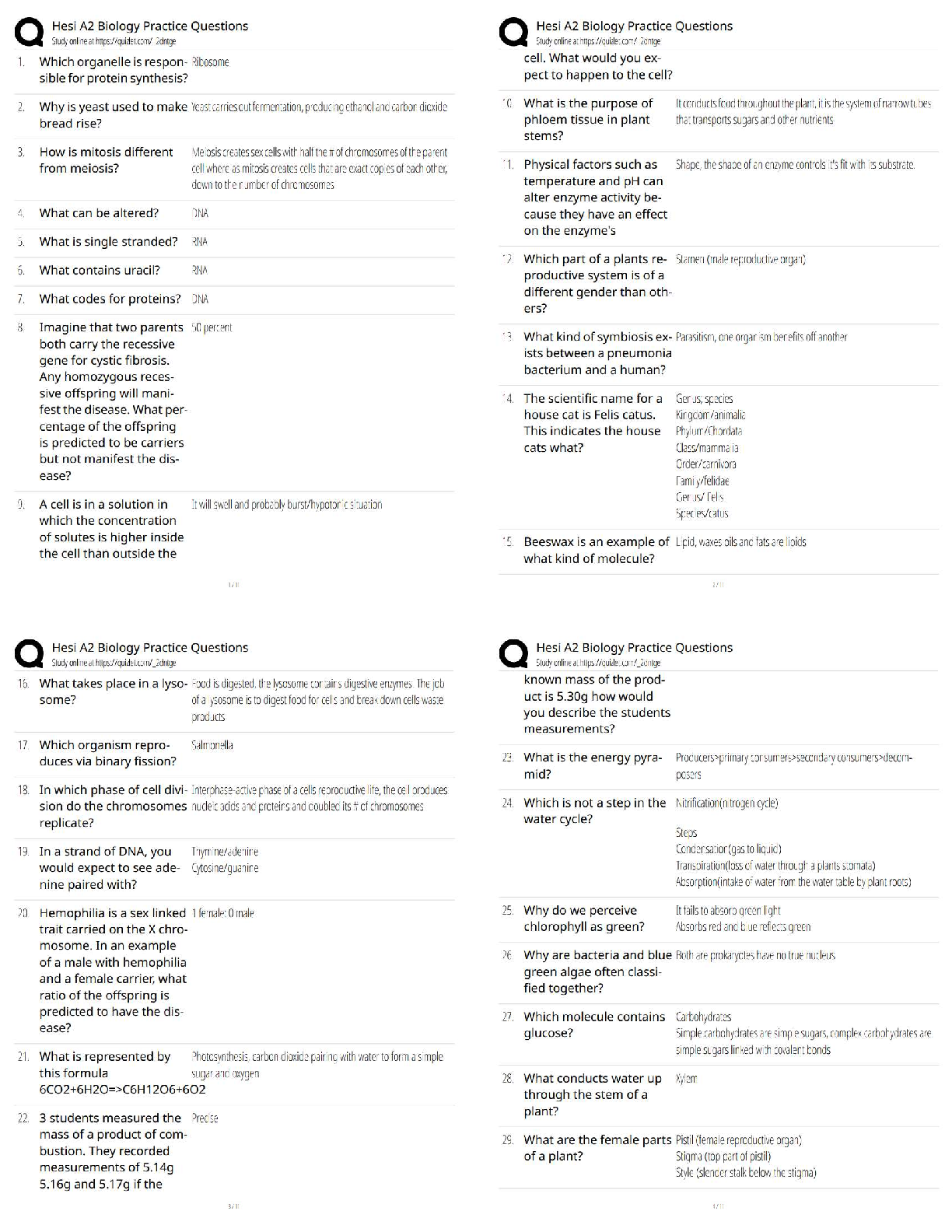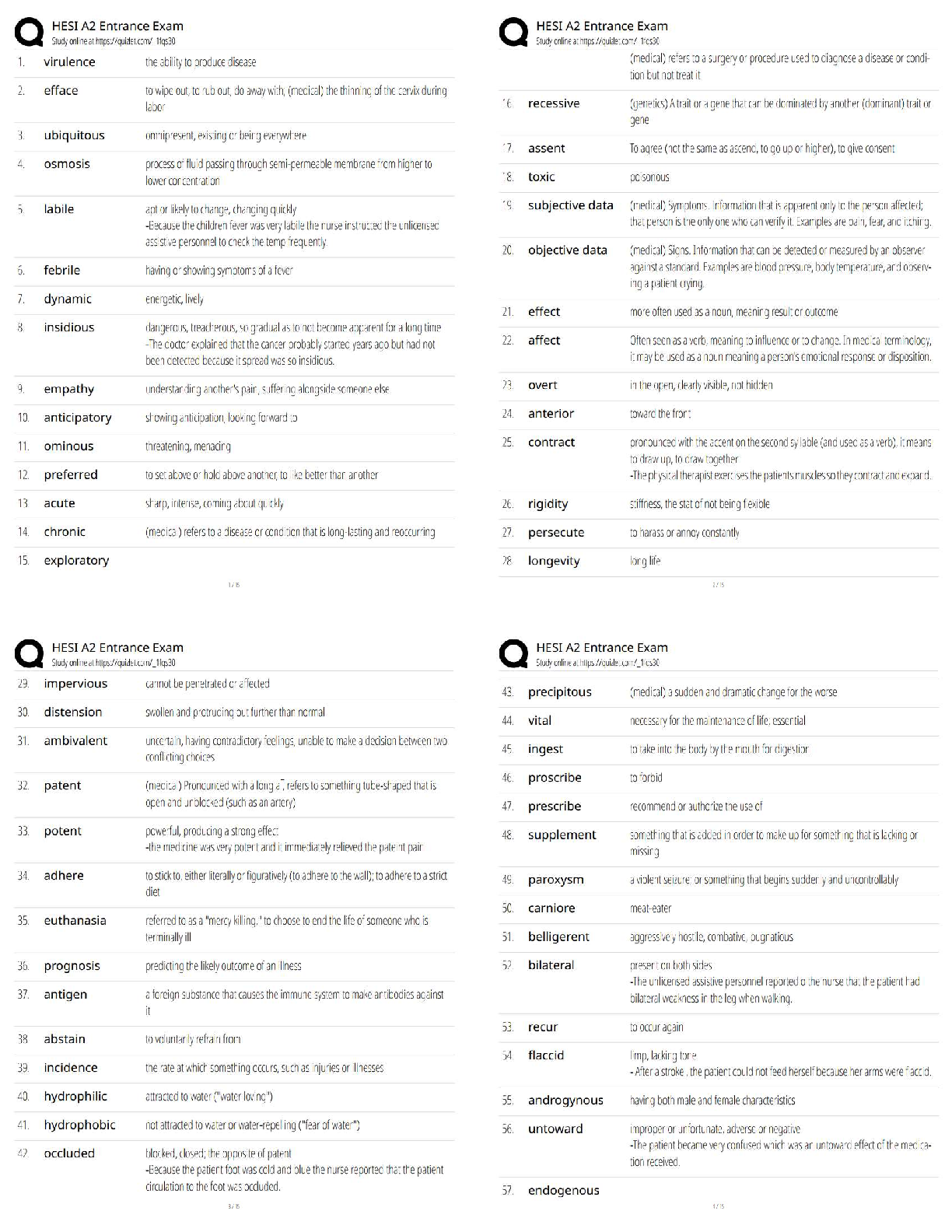Education > QUESTIONS & ANSWERS > Test Bank Chapter 18 Revenue Recognition. (All)
Test Bank Chapter 18 Revenue Recognition.
Document Content and Description Below
Test Bank Chapter 18 Revenue Recognition. CHAPTER 18 REVENUE RECOGNITION IFRS questions are available at the end of this chapter. TRUE-FALSE—Conceptual ... Description F 1. Recognition of revenue. T 2. Realization of revenue. T 3. Delayed recognition of revenue. F 4. Recognizing revenue when right of return exists. T 5. Recognizing revenue prior to product completion. F 6. Use of percentage-of-completion method. T 7. Input measure for contract progress. T 8. Reporting Construction in Process and Billings on Construction in Process. F 9. Construction in Process account balance. F 10. Recognition of revenue under completed-contract method. T 11. Principal advantage of completed-contract method. F 12. Recognizing loss on an unprofitable contract. F 13. Recognizing current period loss on a profitable contract. T 14. Recognizing revenue under completion-of-production basis. F 15. Recording a loss on an unprofitable contract. F 16. Deferring revenue under installment-sales method. T 17. Deferring gross profit under installment-sales method. T 18. Classification of deferred gross profit. F 19. Recognizing revenue under cost-recovery method. T 20. Recognizing profit under cost-recovery method. MULTIPLE CHOICE—Conceptual Description c 21. Revenue recognition principle. b 22. Definition of "realized." a 23. Definition of "earned." b S24. Revenue recognition representations. d P25. Definition of recognition. b P26. Revenue recognition principle. d 27. Recognizing revenue at point of sale. d 28. Recording sales when right of return exists. c 29. Revenue recognition when right of return exists. d 30. Revenue recognition when right of return exists. b 31. Appropriate accounting method for long-term contracts. c 32. Percentage-of-completion method. b 33. Percentage-of-completion method. c 34. Classification of progress billings and construction in process. b 35. Calculation of gross profit using percentage-of-completion. a 36. Disclosure of earned but unbilled revenues. b 37. Disadvantage of using percentage-of-completion. d S38. Percentage-of-completion input measures. MULTIPLE CHOICE—Conceptual (cont.) Description a S39. Advantage of completed-contract method c 40. Revenue, cost, and gross profit under the completed-contract method. a 41. Loss recognition on a long-term contract. c 42. Accounting for long-term contract losses. d 43. Criteria for revenue recognition of completion of production. a 44. Completion-of-production basis. d S45. Revenue recognition of completion of production. b S46. Treatment of estimated contract cost increase. c 47. Presentation of deferred gross profit. c 48. Appropriate use of the installment-sales method. b 49. Valuing repossessed assets. b 50. Gross profit deferred under the installment-sales method. c S51. Income realization on installment sales. d P52. Conservative revenue recognition method. b 53. Income recognition under the cost-recovery method. b 54. Income recognition under the cost-recovery method. d 55. Cost recovery basis of revenue recognition. b 56. Deposit method of revenue recognition. d 57. Cost recovery method. b *58. Types of franchising arrangements. d *59. Accounting for consignment sales. d *60. Allocation of initial franchise fee. a *61. Recognition of continuing franchise fees. b *62. Future bargain purchase option. a *63. Option to purchase franchisee's business agreement. d *64. Revenue recognition by the consignor. P These questions also appear in the Problem-Solving Survival Guide. S These questions also appear in the Study Guide. *This topic is dealt with in an Appendix to the chapter. MULTIPLE CHOICE—Computational Description c 65. Computation of total revenue and accounts receivable. d 66. Computation of total construction expenses. b 67. Computation of costs and profits in excess of billings balance. c 68. Computation of total revenue and construction expenses. b 69. Gross profit recognized under percentage-of-completion. c 70. Computation of construction in process amount. c 71. Percentage-of-completion method. c 72. Percentage-of-completion method. b 73. Determine cash collected on long-term construction contract. d 74. Determine gross profit using percentage-of-completion. c 75. Gross profit to be recognized using percentage-of-completion. b 76. Gross profit to be recognized using percentage-of-completion. c 77. Profit to be recognized using completed-contract method. a 78. Gross profit to be recognized using percentage-of-completion. MULTIPLE CHOICE—Computational (cont.) Description b 79. Profit to be recognized using completed-contract method. a 80. Gross profit to be recognized using percentage-of-completion. c 81. Gross profit to be recognized using completed-contract method. b 82. Computation of construction costs incurred. c 83. Gross profit recognized under percentage-of-completion. a 84. Computation of construction in process amount. b 85. Loss recognized using completed-contract method. c 86. Revenue recognition using completed-contract method. c 87. Reporting a current liability with completed-contract-method. a 88. Reporting inventory under completed-contract method. d 89. Gain recognized on repossession—installment sale. b 90. Calculate loss on repossessed merchandise. a 91. Calculate loss on repossessed merchandise. b 92. Interest recognized on installment sales. b 93. Calculation of deferred gross profit amount. b 94. Computation of realized gross profit amount. d 95. Computation of loss on repossession. d 96. Calculation of gross profit rate. a 97. Computation of net income from installment sales. d 98. Computation of realized and deferred gross profit. a 99. Calculation of gross profit rate. d 100. Computation of net income from installment sales. a 101. Computation of realized and deferred gross profit. c 102. Computation of realized gross profit amount. b 103. Computation of realized gross profit-cost recovery method. a 104. Revenue recognized under the cost-recovery method. d *105. Cancellation of franchise agreement. c *106. Accounting for initial and annual continuing franchise fees. b *107. Franchise fee with a bargain purchase option. d *108. Sales on consignment. a *109. Reporting inventory on consignment. MULTIPLE CHOICE—CPA Adapted Description a 110. FASB's definition of "recognition." b 111. Determine contract costs incurred during year. d 112. Gross profit to be recognized using percentage-of-completion. d 113. Profit to be recognized using completed-contract method. c 114. Revenue recognized under completed-production method. b 115. Determine balance of installment accounts receivable. c 116. Calculate deferred gross profit—installment sales. c 117. Calculate deferred gross profit—installment sales. c 118. Balance of deferred gross profit—installment sales. c 119. Reporting deferred gross profit—installment sales. a 120. Effect of collections received on service contracts. EXERCISES Item Description E18-121 Revenue recognition (essay). E18-122 Revenue recognition (essay). E18-123 Long-term contracts (essay). E18-124 Journal entries—percentage-of-completion. E18-125 Percentage-of-completion method. E18-126 Percentage-of-completion method. E18-127 Percentage-of-completion and completed-contract methods. E18-128 Installment sales. E18-129 Installment sales. E18-130 Installment sales. *E18-131 Franchises. PROBLEMS Item Description P18-132 Long-term construction project accounting. P18-133 Accounting for long-term construction contracts. P18-134 Long-term contract accounting—completed-contract. P18-135 Installment sales. CHAPTER LEARNING OBJECTIVES 1. Apply the revenue recognition principle. 2. Describe accounting issues for revenue recognition at point of sale. 3. Apply the percentage-of-completion method for long-term contracts. 4. Apply the completed-contract method for long-term contracts. 5. Identify the proper accounting for losses on long-term contracts. 6. Describe the installment-sales method of accounting. 7. Explain the cost-recovery method of accounting. *8. Explain revenue recognition for franchises and consignment sales. SUMMARY OF LEARNING OBJECTIVES BY QUESTIONS Item Type Item Type Item Type Item Type Item Type Item Type Item Type Learning Objective 1 1. TF 3. TF 22. MC S24. MC P26. MC 121. E 2. TF 21. MC 23. MC P25. MC 110. MC 122. E Learning Objective 2 4. TF 6. TF 28. MC 30. MC 5. TF 27. MC 29. MC 122. E Learning Objective 3 7. TF 34. MC 66. MC 72. MC 80. MC 123. E 133. P 8. TF 35. MC 67. MC 73. MC 82. MC 124. E 9. TF 36. MC 68. MC 74. MC 83. MC 125. E 31. MC 37. MC 69. MC 75. MC 84. MC 126. E 32. MC S38. MC 70. MC 76. MC 111. MC 127. E 33. MC 65. MC 71. MC 78. MC 112. MC 132. P Learning Objective 4 10. TF 40. MC [Show More]
Last updated: 3 years ago
Preview 1 out of 30 pages
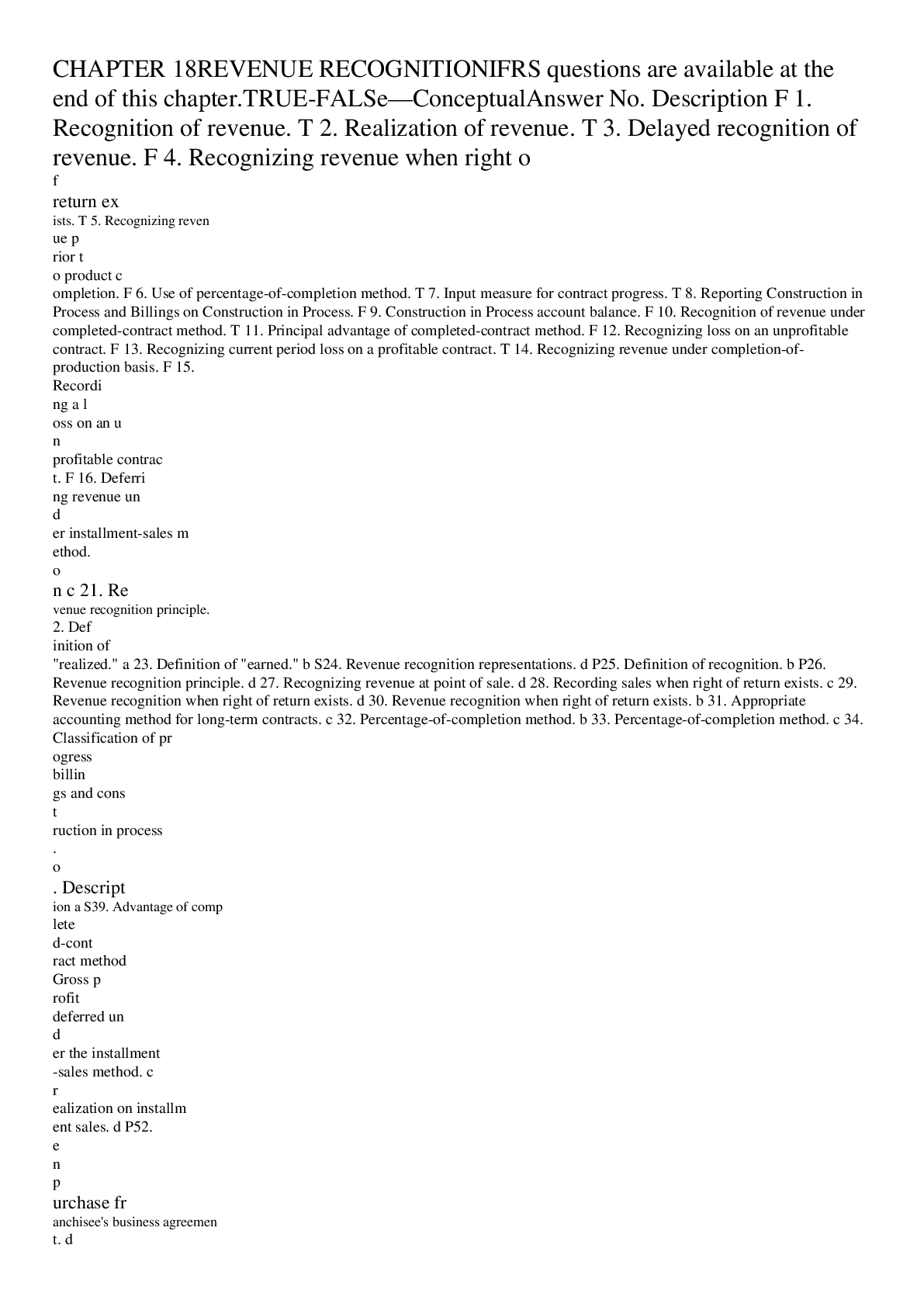
Buy this document to get the full access instantly
Instant Download Access after purchase
Buy NowInstant download
We Accept:

Reviews( 0 )
$12.00
Can't find what you want? Try our AI powered Search
Document information
Connected school, study & course
About the document
Uploaded On
Nov 04, 2020
Number of pages
30
Written in
All
Additional information
This document has been written for:
Uploaded
Nov 04, 2020
Downloads
0
Views
79



.png)
